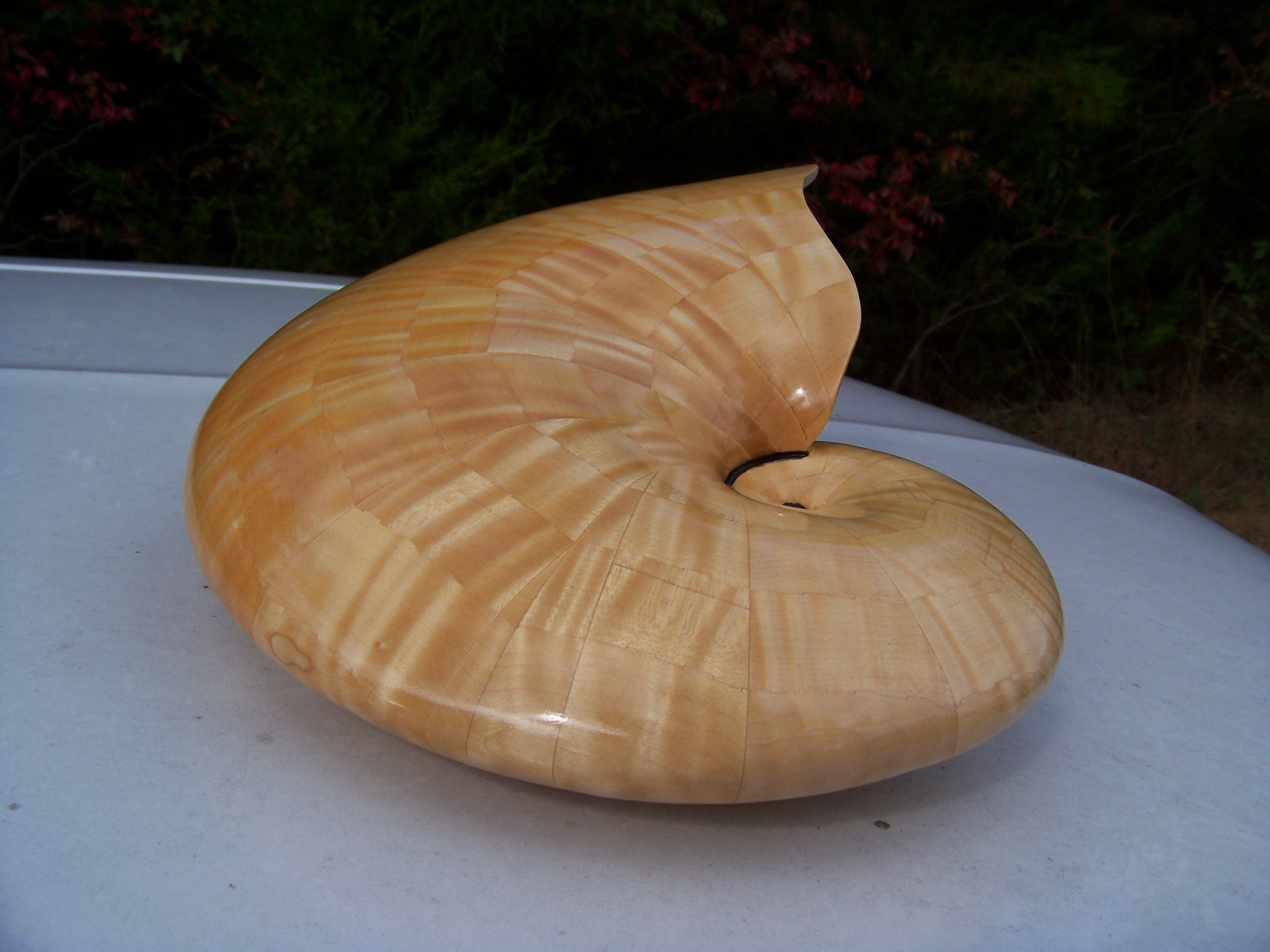|
A recent project has been improving my friction-fit tiles. I have added squares, rhombus, and pentagon shaped
tiles. These are re-usable and can be used to model a huge variety of shapes. Click on the picture above to go
to my new page that has more information about the tiles.
| 14 Inch Maple Shell 2009 |

|
14 inch diameter by 5 1/4 inch wide curly maple shell. It was made with a different technique than all my other
shells that allows the shell to be narrower. This one does not have a stand because it would tip over too easily if
stood up on edge. The smaller interior whorls are now partially exposed instead of being covered and the form overlaps
onto itself. The dark line is colored epoxy applied along the joint where the overlap occurs. This new construction
technique makes the shell look a little bit more like the fossil ammonites that are the inspiration for the shells.

|

